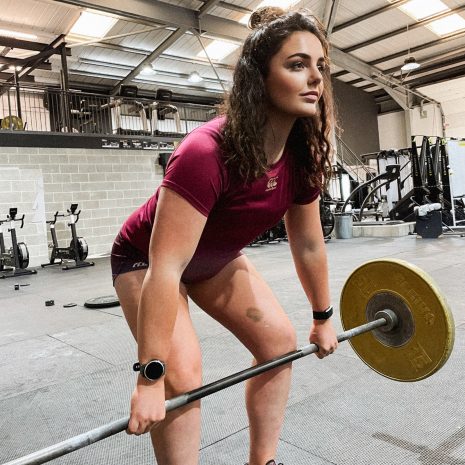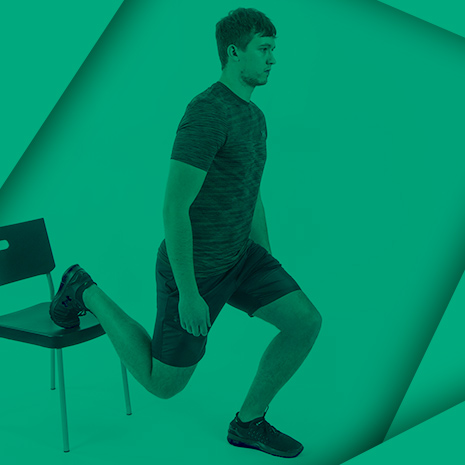[Average reading time: 10 minutes]
You’re a prop. That means you should be one of the biggest, most powerful players on the field. Props always take a hefty beating and due to their role in the team, are required to carry a daunting workload over the course of a game. Props lay the foundation for the team’s success. Such responsibility requires a diligent attitude towards training and preparation.

Former Wales and Lions prop, Adam Jones gave us his two cents about the key position in his Tips for Amateur Rugby Players article earlier in the year: “I think you have got to become strong: in the legs, back, neck, hips and the core. That’s probably the one thing I noticed first off when I came to professional rugby.”
So how do you follow Jones’ advice in achieving strength in those and other key training areas for props? The following article delves into the specific information that props can use to improve their performance. Players of other positions will also find this article useful in improving strength and power – 2 key components of any successful rugby player.
I aim to provide you with simplistic guidelines that you can implement in your endeavour to become the biggest, strongest prop possible.
Quick links
What does a prop do?
Training principles
Nutrition
Training program
Key takeaways
What does a prop do?
Key roles of a rugby prop: Scrummaging and lineouts
- Scrummage Requirements – Horizontal Pressing Power
One of the most important elements of performance for a prop is their ability to produce horizontal force in a scrum. Because the arms will be used to lock teammates together, most force production in a scrum will come from the legs.
- Lineout Requirements – Vertical Pressing Power
Because props need to press other players into the air during a lineout, their vertical pressing power must be high in order to gain an advantage over opposition.
Now that we have a basic understanding of what is required on the rugby pitch, let’s break it down into what actually makes a good prop.
Mass / size
First and foremost, the mass / size of a prop plays a significant role in their requirements. Have you ever seen a weedy prop? No, didn’t think so. Considering you will have hundreds of kilos of muscle-bound opposition hitting you like a train, you had better be able to give just as much back. Being small simply isn’t going to cut it.
With mass comes weight. The bigger a prop is, generally the more they will weigh. This helps a lot when you need to scrum against similarly large opponents. It’s no coincidence that props are usually the biggest players on the team – they need to be. Of course, a lot of the mass of a prop will come genetically as it’s near impossible to make a small-framed human into a great prop. Bigger guys will naturally find themselves pulled towards this position as that’s what suits them best.
Despite this, smaller props will find it very useful to gain as much usable mass as possible. This usually comes from nutrition and training variables over a long period of time. Becoming a big strong prop does not happen overnight.
Strength
It is essential to possess as much strength as possible to be a successful prop. A scrum is basically a reverse tug of war and the bigger, stronger team usually wins, it’s that simple. Whilst there is a certain level of skill involved, more strength = more success. You can’t put a moped against a truck and expect to finish on top. Increasing strength takes hard work, time and patience. There are however quicker ways to achieve optimal strength (discussed below) which will allow you to improve your performance as quickly as possible.
Power
Maximal power comes from the increased rate (speed) of force development. In general, the more force (strength) someone can produce, the more powerful they will be. Each skill will require strength to be applied in a specific way, however that skill must be mastered to fully develop the capacity to perform it with optimal power.
Endurance
Despite all the above points suggesting that being bigger and stronger will lead to success, players must be able to maintain that power output for long periods of time. Strength endurance plays a key role in scrums, particularly towards the back end of a game.
Practical application
Now that we understand how the role of a prop relates to their skills, let’s investigate how to develop the individual elements. Although the individual techniques of the scrum, lineout and other on-field skills will be developed from technical skills and gameplay, the basic elements of being bigger, faster and stronger really come down to activity in the gym.
After breaking it down into each section, it is clear that becoming bigger and stronger should be the primary focus of a rugby prop.
Now we could go into massive amounts of detail on how to get bigger and stronger (there are masses of documentation dedicated to the topic) but it is beyond the scope of this article. I will therefore aim to provide you with simplistic guidelines that you can implement in your endeavour to become the biggest, strongest version of you.
TRAINING
Periodisation: Simply put, a structured and systematic programming to achieve a specific goal. Periodisation can become hugely complex but keeping it super simple, you should try to develop one skill at a time rather than focusing on a load of different things. Think jack-of-all-trades, master of none. Trying to get good at everything at the same time will give sub-optimal results. If you want to get strong, focus on a specific period where you push hard solely for strength, and you will get better results. Remember that you are in it for the long haul, not week-to-week. Better programming today means better performance tomorrow.
Use a program: If you don’t have a program, get one. Not only will it provide you with some guidance on what to do in the gym, it will allow you to track your progression over time. This allows you to better understand how to change your program to help performance.
Progressive overload: Refers to the gradual increase of training intensity over time. If you’re not progressing, you will be left on the sidelines. Ensure you are pushing training sessions each week/month whether it means increasing your weights or sets/reps (volume), just make sure you are moving forward.
Compound lifts: The majority of your lifting should be geared towards compound lifts, not isolation lifts. Think squats, dead lifts, cleans, pushes and pulls as opposed to bicep curls and tricep extensions.
Rep range: For strength-based work, the majority of your reps should stay within the 3-5 range, 80-90% of your 1 Rep Maximum (1RM). For hypertrophy work, the majority of your reps should be within the 8-12 range at around 70-80% of your 1RM. For power work, you should focus on 3-5 rep range at lower intensities such as 65% of 1RM, while focusing on moving as quickly as possible.
Recovery: You can train as hard as you like, but if you don’t focus on your recovery your performance and results will suffer. The main areas to work on to improve recovery are – sleep, nutrition and stress.

NUTRITION
Once more, we could go into great detail with nutrition and specific requirements, however the long and short of it is that you have to ensure you are consuming enough energy on a daily basis to maintain/increase your mass. Of course, if you are looking to gain mass you should be aiming to increase your caloric intake to gain weight each week whilst training hard which will facilitate performance. Start logging your food and taking your weight on a weekly basis – you’ll soon see where you are going wrong, making it easier to identify what to change.
Now that we’ve covered a range of theory, let’s get practical. I’ve put together a training program specifically for props, that can be worked around the usual Tuesday and Thursday team training days.
Training Program for Props – Strength
Key takeaways
- Bigger and stronger should be the goal for props
- Focus on progressive overload
- Build a muscular base to start
- Gain as much strength as possible
- Focus on selective power (usually horizontal and vertical pressing)
- Recovery is everything – no recovery = sub-optimal results
I hope you’ve found this article and training program useful. Feel free to get in touch by leaving a comment below, and remember to share this page with someone who may find it useful.






Comments